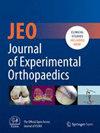Artificial intelligence-guided assessment of the hip-knee-ankle angle shows excellent correlation with experienced human raters
Abstract
Purpose
The hip-knee-ankle angle is a crucial parameter in orthopaedic surgery for lower limb assessment. However, traditional methods for measuring the hip-knee-ankle angle on standing long-leg anteroposterior radiographs are time-consuming, require significant expertise and lack reproducibility. Given the emergence of artificial intelligence as a promising tool to automate these measurements, this study aimed to assess the accuracy of Gleamer BoneMetrics for hip-knee-ankle angle measurement and its correlation with assessments by experienced orthopaedic surgeons.
Methods
A total of 75 patients who underwent knee arthroplasty between October 2023 and June 2024 were included. Preoperative and postoperative long-leg anteroposterior radiographs were analysed both by two experienced orthopaedic surgeons who manually measured the hip-knee-ankle angle and by the Gleamer BoneMetrics software; the analyses were tested for both inter- and intra-rater reliability. Statistical analysis was performed using intraclass correlation coefficients and Bland-Altman plots to assess the correlation between the Gleamer BoneMetrics and the human raters.
Results
The Gleamer BoneMetrics demonstrated excellent inter- and intra-rater reliability, with intraclass correlation coefficient values ranging from 0.995 to 0.998, which were comparable to the surgeons' measurements of 0.997–0.998. The Gleamer BoneMetrics's intra-rater reliability was also excellent, with intraclass correlation coefficient values of 1.0 preoperatively and 0.996 postoperatively. Bland–Altman analysis showed minimal measurement discrepancies between Gleamer BoneMetrics and the human raters. However, in 2% of the cases (n = 3), Gleamer BoneMetrics was not able to provide measurements.
Conclusion
The artificial intelligence-based BoneMetrics software offers an efficient and accurate method for hip-knee-ankle angle measurement, with performance comparable to experienced orthopaedic surgeons. While promising, further development is necessary to address cases in which image quality or positioning issues prevent automated measurement and to reduce reliance on human quality control.
Level of Evidence
Level III.





 求助内容:
求助内容: 应助结果提醒方式:
应助结果提醒方式:


